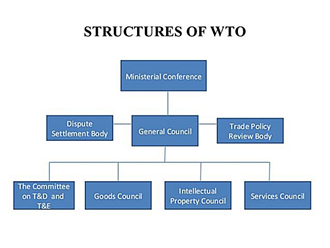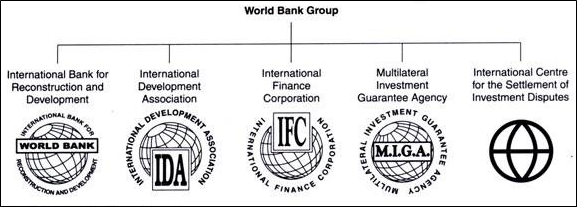The Minimum Support Price (MSP) is a form of market intervention by the Government of India to ensure agricultural producers are protected against sharp price drops. MSPs are announced by the Government of India at the beginning of the sowing season for certain crops based on the recommendations of the Commission for Agricultural Costs and Prices (CACP). Thus, MSP is announced for Rabi crops and Kharif crops separately before the sowing season respectively. This policy aims to incentivise farmers to adopt modern technology and boost productivity by assuring them a minimum price for their produce.
Crops Covered under MSP
As of now, CACP recommends MSPs of 23 commodities, which comprise 7 cereals (paddy, wheat, maize, sorghum, pearl millet, barley and ragi), 5 pulses (gram, tur, moong, urad, lentil), 7 oilseeds (groundnut, rapeseed-mustard, soyabean, sesamum, sunflower, safflower, Niger seed), and 4 commercial crops (copra, sugar, cotton and raw jute).
Note: While MSP is announced for sugar, Fair and Remunerative Price (FRP) is announced for sugarcane
Fair and Remunerative Price (FRP) for sugarcaneIt is a mandatory price which are to be paid by sugar mill owners to procure cane from sugarcane farmers. Since sugarcane has a very short shelf life, the responsibility of procurement of cane is on the sugar mills that are mandatorily expected to pay the FRP on purchase upfront. Moreover, unlike MSP it has a legal basis as FRP is established under the Sugarcane Control Order, 1966. However, MSP is announced for sugar (final product). The central government had introduced Minimum selling price for sugar in 2018. It ensures that the industry gets at least the minimum cost of production of sugar, allowing them to clear the sugarcane dues of farmers. Issues with FRP and MSPFRP for sugarcane has consistently increased, whereas MSP has remained stagnant over the years. This has led to a condition where the sugar is sold lower than the cost of production, thus sugar mills are unable to clear dues of sugarcane farmers.
State Agreed Price (SAP): These are the prices which are announced by respective state governments for procurement of sugarcane from farmers by sugar mills. The SAP are announced by the Governments of key sugarcane producing states. States have the authority to determine their SAP, typically higher than the FRP. |
Objectives of MSP
-
- Price stability: To protect farmers from distress sales during bumper production years and stabilise farm income.
- Income support: To ensure farmers get a remunerative price that covers their production costs and provides a margin.
- Production incentives: To encourage the cultivation of diverse crops by offering guaranteed prices.
Factors considered for determining MSP of any crop
i. Demand and supply
ii. Cost of production
iii. Price trends in the market, both domestic and international
iv. Inter-crop price parity
v. Terms of trade between agriculture and non-agriculture
vi. A minimum of 50 percent as the margin over cost of production
Calculation Methods
The CACP considers various factors while recommending MSP, including the cost of production, demand-supply dynamics, price trends in the domestic and international markets, and the likely impact of MSP on consumers. The MSP is calculated using three primary formulas:
1. Actual paid-out costs (A2 Formula): It covers all out-of-pocket expenses incurred by farmers, including seeds, fertilizers, pesticides, hired labour, fuel, irrigation, and other inputs.
2. Actual paid-out costs (A2) plus family labour (FL) (A2+FL Formula): It includes A2 costs along with an imputed value of family labour. It considers the unpaid value of family labour which is included as part of the cost notionally incurred in agricultural crop production.
3. Comprehensive costs (C2 Formula): It represents a comprehensive cost, covering A2+FL costs and including the rental value of owned land and imputed interest on owned capital. It means that opportunity cost for the land which is used for cultivation is also factored in. To add to that, if capital is being used from the farmer’s end, the imputed interest (ie the interest that would have been earned, if the same capital was to be invested in some other economic activities) is also factored in.
Note: The general trend of MSP announcement is done for various crops to ensure a 50% return over the cost of production, as per the A2+FL formula.
Legalising the MSP regime
MSP announcement is not backed up by any legal framework. In other words, there is no law which mandates compulsory procurement of crops by the Government under MSP
Positives
1. Income security for farmers: Legalizing MSP ensures that farmers receive a guaranteed minimum price for their produce, providing them with financial stability and security. This can reduce the risk of distress sales and protect farmers from price volatility in the agricultural markets.
2. Encouragement for investment: A guaranteed income can encourage farmers to invest in better inputs, technology, and sustainable practices, leading to increased productivity and profitability. It can also incentivize the cultivation of diverse crops, promoting crop diversification.
3. Reduction in rural distress: By ensuring fair prices, MSP can help alleviate rural poverty and reduce farmer suicides, addressing the socio-economic distress prevalent in many agricultural regions.
4. Boost to food security: MSP can ensure a stable supply of essential crops, contributing to national food security by encouraging the production of staple foods. It helps maintain buffer stocks, which are crucial for managing food supply during shortages or emergencies.
5. Market stability: Legalising MSP can contribute to overall market stability by preventing drastic fluctuations in agricultural prices, benefiting both producers and consumers.
Concerns
1. Fiscal burden on Government: Implementing MSP as a legal guarantee can impose a significant financial burden on the government due to increased procurement and storage costs. It may lead to a rise in the fiscal deficit, affecting other development and welfare programs. One of the independent reports by CRISIL highlighted if there is mandatory procurement of all the crops under MSP, it would cost the government about Rs 10 lakh crore which is roughly the total capital expenditure in Budget 2023-24.
2. Distortion of market dynamics: Guaranteed prices can distort market signals, leading to overproduction of certain crops and underproduction of others. This can result in inefficiencies and misallocation of resources, potentially harming the agricultural economy in the long run.
3. Storage and procurement challenges: Large-scale procurement under MSP requires substantial storage infrastructure, which is currently inadequate. Poor storage facilities can lead to significant post-harvest losses, negating the benefits of MSP.
4. Exclusion of Small and Marginal farmers: The benefits of MSP often do not reach small and marginal farmers, who may lack the resources to produce at a scale that qualifies for government procurement. These farmers may continue to rely on local markets and face exploitation by intermediaries. It is analysed from the agricultural data that MSP benefits only 6 percent of the total farmers in India, most of them being large farmers.
5. Potential for corruption and mismanagement: Legalising MSP can create opportunities for corruption and inefficiency in the procurement process, with possible manipulation of records and favouritism. Ensuring transparency and accountability in MSP operations can be challenging.
6. Impact on international trade: Guaranteed MSPs can lead to price distortions that make Indian agricultural products less competitive in international markets. This can increase disputes, particularly under World Trade Organization (WTO) rules.
National Commission on Farmers (NCF)The Swaminathan Commission, officially known as the National Commission on Farmers (NCF), was established by the Government of India in 2004 under the chairmanship of Dr. M.S. Swaminathan, an eminent agricultural scientist. The commission’s primary objective was to address the various challenges faced by Indian farmers and suggest measures to improve their economic conditions and ensure sustainable agricultural growth. Key Recommendations of the Swaminathan Commission1. Ensuring Minimum Support Price (MSP)
2. Land Reforms
3. Irrigation and Water Management
4. Credit and Insurance
5. Agricultural Research and Extension
6. Food Security
7. Risk Management
8. Women’s Empowerment
|



